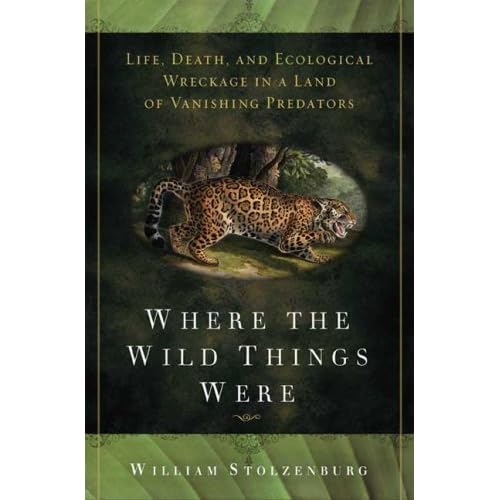
A number of science controversies surrounding trophic cascades are well-presented in William Stolzenburg's book, "Where the Wild Things Were: Life Death, and Ecological Wreckage in a Land of Vanishing Predators". 2008. The book deals with the 20th century history of population ecology and the struggle to understand whether populations of animals and plants are controlled from the top by large predators or from the bottom by primary productivity. From Elton's realization of the pyramid of biomass on Spitzbergen to Hairston, Smith, and Slobodkin's Green World Hypothesis, to Paine's experimental verification of top-down control in starfish and mussel systems, the book covers the origin and development of such key concepts in ecology and conservation as keystone species and trophic cascades.
In addition to covering classic work such as Paine's starfish and mussel studies, the book also delves into controversies over killer whales and sea otter populations. While the latter are controversial because the results are relatively new, other controversies such as those over the rise and collapse of deer herds on the Kaibab plateau after the removal of top predators are controversial because the data are so old.
I wish the book had covered more of the controversy surrounding the Yellowstone wolves-grazing story in Wicker 2003 . The classic story of the wolves restoring Yellowstone's ecosystem to equilibrium should be interrogated because of differing interpretations of top-down (predator controlled) or bottom-up (hydrology-controlled) factors. For example, Wolf, Cooper, and Hobbs (2007) call much of Wicker's simplistic assumptions into question. And Meyer and Persico (2009) question Wolf, Cooper, and Hobbs' climate assumptions for the Holocene. The latter are both good papers, coming from different paradigms, all illustrating some of the difficulties for assigning "cause" and "effect" in dynamic and contingently evolving ecosystems.
Stolzenburg writes that "while the fall of the great terrestrial predators can be summed up as a casualty of the agricultural age, the subsequent collapse of their marine counterparts owes itself to the coming of the technological age." The work concludes with an excellent analysis of the conservation biology idea of linked conservation reserves, and the human opposition to acceptance of large wild animals. In the end, whatever the ecological story, the human social story will always get the last word.
No comments:
Post a Comment